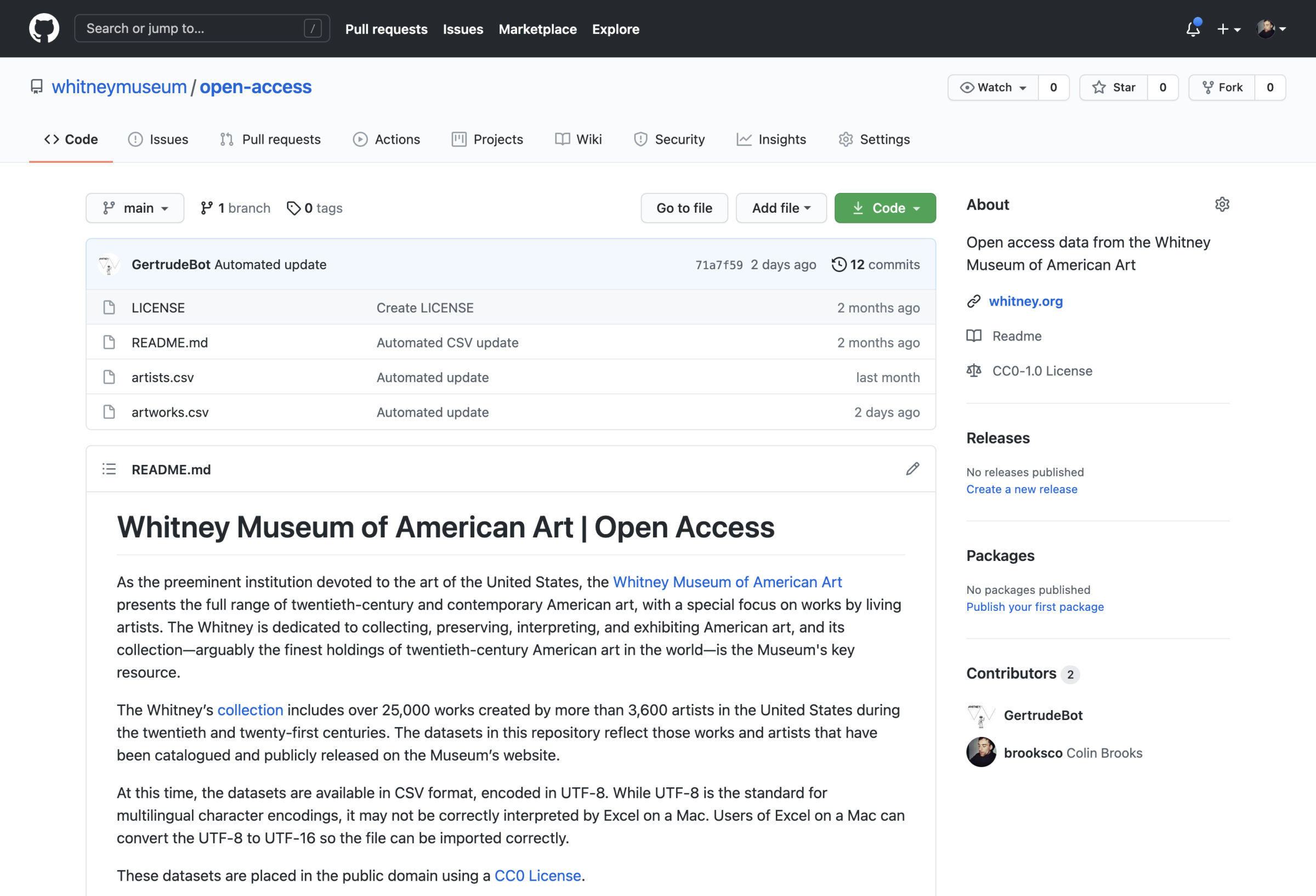
This is what we are here for, as a sector: To make the results of human creativity from all times and all corners of the world accessible to all citizens, to foster new knowledge and inspire new creativity.
Merete Sanderhoff (SMK) on open access
It’s here. It’s finally here. The Whitney Museum of American Art’s first completely public open access datasets:
https://github.com/whitneymuseum/open-access
This has been a long time coming, and something we’ve been excitedly watching many of our peers embrace. So what exactly is this?
What open access means
Open access is the sharing of collections data or other culturally-rich information held by galleries, archives, libraries, and museums to the public, with limited to no restrictions, for the purposes of exploration, scholarship, and other creative endeavors.
Or…
Open access is taking the contents of our collection and releasing the data about artists and artworks in a useable, digestible format, with no-rights-reserved licensing.
Or…
Open access is putting spreadsheets on the internet.
Why open access matters
It aligns with our mission and values
The Whitney exists to serve a diverse public, and strives to be as experimental and responsive as the artists we work with. We do this in significant part by sharing our collection, through exhibitions at the Museum and more recently the internet. Open access is a modern, digital approach to sharing information about our collection, that encourages the public to explore and answer questions about the art that we hold.
It supports divergent narratives
A robust open access program is an acknowledgement that no one owns the narratives and histories the Museum strives to illuminate. By releasing data around our collection into the public sphere we make it easier for people outside the Museum to analyze trends within that data, and generate novel discoveries for themselves or others.
It provides an accurate source of data
Open access is a chance to ensure that to the extent possible, accurate data and assets are available to the public, lessening the need for inaccurate 3rd party resources. This has been a problem for others in the past.
It is increasingly expected
Open access is gradually being embraced across the sector. Institutions with robust open access initiatives include: The Met, MoMA, Cooper Hewitt, Brooklyn Museum, Art Institute of Chicago, The Smithsonian, The Walters Museum, The Cleveland Museum of Art, The Getty, Minneapolis Museum of Art, Rijksmuseum, SMK, Te Papa, Europeana, and many others.
What we’re releasing right now
You can head to our GitHub open access repository and download the artists.csv or artworks.csv spreadsheets, containing almost exactly the same information as on any of our whitney.org/collection pages. At this time we are not including object labels or artist bios, but otherwise the data should mirror what you see if you were to visit any given artist or artwork in the online collection. That data is licensed under a Creative Commons CC0 license, which means we have effectively placed it in the public domain, where you are free to do with it as you please (though we do ask that you don’t misrepresent the dataset, and attribute it to the Museum where possible).
What’s next
There is always more data to release, and perhaps most conspicuously absent from this release are any images. This is a first step for the Whitney in publicly releasing our data in such a transparent, structured form, and there will surely continue to be further steps along this journey.
Thank you to everyone who has worked to make this possible.
Looking forward to seeing what you create.